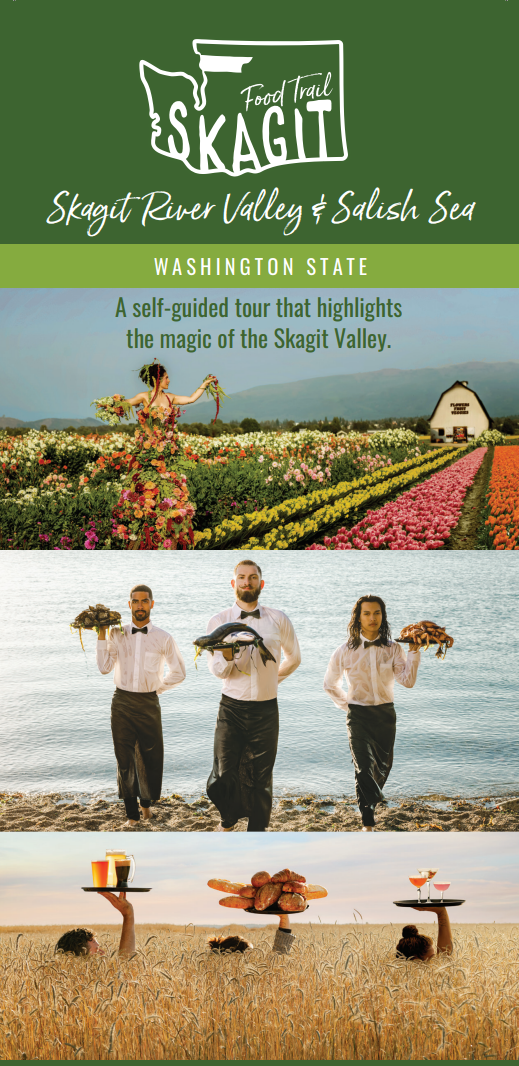Cultivating Connection Through Cuisine: How Pacific Northwest Marketing Created the Skagit Food Trail
In the heart of Washington’s agricultural country, where fields stretch toward the horizon and farmstands dot the backroads, Julie Burgmeier saw an opportunity to do more than just celebrate local food—she saw a chance to build a bridge between tourism, community, and sustainability. Through Skagit Marketing, now rebranding as Pacific Northwest Marketing, Julie created the Skagit Food Trail—a tourism initiative designed to highlight the rich flavors and stories of the Skagit Valley, while supporting small businesses, farmers, and cultural heritage.
Planting the Seeds of a New Experience
Inspired by the farm-to-table movement and the region’s deep agricultural roots, Julie developed the idea for the Skagit Food Trail and took the lead in securing funding through a Skagit County tourism grant. Her proposal emphasized the trail’s wide-ranging benefits—not just as a travel itinerary, but as a catalyst for long-term economic and cultural development.
“Engaging in food tourism contributes to more responsible and sustainable tourism that benefits both travelers and residents,” Julie shared in her grant application. “It connects tourists with the destination at different levels of society, fosters entrepreneurship, and distributes income throughout the value chain.”
The result? A self-guided trail that maps out the best of Skagit’s culinary scene—from farm tours and creameries to craft breweries, farmers markets, and restaurants that proudly source local ingredients.
A Taste of Skagit That Travels
The Skagit Food Trail encourages visitors to go beyond the surface—to taste, tour, and talk to the people behind the products. It doesn’t just feed tourists; it feeds curiosity, supports rural businesses, and preserves cultural heritage. Each stop is a chance to learn about Skagit’s agricultural history, meet local producers, and savor the seasonal bounty the valley is known for.
By guiding visitors through multiple parts of the county—urban and rural—the trail also helps disperse tourism more evenly, mitigating crowding and supporting businesses off the beaten path. “The Food Trail reduces regional asymmetry and works in harmony with seasonality,” Julie noted, “diversifying the tourist offer throughout the year in a more sustainable way.”
Building Community and Economic Resilience
At its core, the Skagit Food Trail isn’t just about attracting overnight visitors—though it certainly does that by showcasing a rich and delicious reason to stay longer. It’s also about community development, supporting minority-owned businesses, and generating pride in local customs, history, and traditions.
By promoting food tourism, Julie and her team have helped enhance biodiversity, preserve farmland, and build a platform for future growth rooted in authenticity and sustainability. The Skagit Food Trail empowers travelers to spend consciously and experience the valley in a way that’s personal, enriching, and impactful.
Thanks to Pacific Northwest Marketing’s vision and leadership, the Skagit Food Trail has become more than a map—it’s a movement that celebrates the land, the people, and the unforgettable flavors of Skagit Valley.





Leave a Reply
Want to join the discussion?Feel free to contribute!